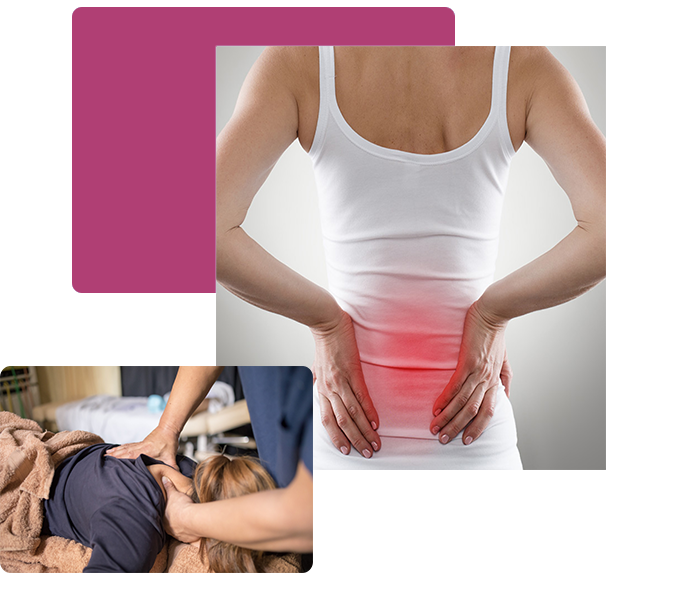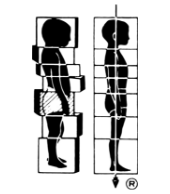THE TEN SERIES
Most clients coming to Rolfing for the first time will benefit most from a ten-series. While people often come to bodywork for relief from pain, Rolfing takes a longer view than simple pain relief and works to reorganize the body. While massage on a specific spot usually creates temporary relief from that pain, the alignment issues creating that pain will often cause the problem to crop up again within a few weeks. By realigning the entire body over 10 sessions, Rolfing creates long-term health as a more permanent solution to pains or dysfunctions.
For a fairly typical complaint such as neck or lower back pain there are often extentuating circumstances. Shoulder rounded forward from hours at a keyboard take the shoulders away from the support of the hips, various shoe issues keep you from effectively using your whole foot when standing or walking, the head is held out in front of the body rather than balanced on top of the spine, and often more than just one issue contributes to the pain. The back pain, while important to relieve, is often a symptom of a larger systemic problem which must be dealt with to achieve a long-lasting pain solution.

Dr. Ida Rolf designed the ten-series as a blueprint for covering the entire body in a way that the body can support the change with minimal relapse. Each session builds on and finishes up the work of the prior session and builds support for the body to integrate the next session. While the ten-series provides a general blueprint, each person and body is different and will have different needs. While structural and functional goals are similar, the specifics of achieving those goals will vary greatly based on a client's body, movement patterns, daily routine, etc. Ten-series are varied from client to client, but for most clients will look something like this:
Session 1-3: Sleeve or Surface Sessions
Session 1
Often referred to as the "freeing the breath" session, the first session focuses on ribs, shoulders, and abdominal muscles. For clients unaccustomed to breath work this is often a surprising session where many report feeling that it redefines their idea of what a full inhale feels like. Session 1 also introduces the idea of breahting into areas of the body as a means to help release tensions.
Session 2
Session 2 is the first step towards rebuilding support in the legs. The primary territory for this session is below the knee, restoring motion between the bones of the feet, tuning up the arches, and starting to rebalance how the body rests on the feet. Depending on need, this session may also involve some work on the upper legs and hips.
Session 3
The "lateral line" session, Session 3 focuses on the sides of the body from ankle to armpit. This session helps to balance the body from front to back and begins to transition the work from surface to deeper fascial work. Many clients find a feeling of greater length of feeling taller at the end of this session. This is also a good decision point for a client to review how Rolfing is working for them and decide if they wish to continue through the full ten-series.
Session 4-7: Core or Deep Sessions
Session 4
Session 4 goes back to the legs for a deeper run and focus on lengthening the inner line of the legs from ankle to pelvic floor. This session is often helpful for clients with knee issues and creates stability through the inner line of the legs, allowing clients to stand and walk with less effort. This establishes a line of weight transmission in the lower body that will be continued in the work of Session 5.
Session 5
Session 5 continues the work from Session 4 to open and lengthen the rest of the front body. This covers hips to chest and deeper work includes psoas, pec minor, and front of the neck. For clients who tend to slump forward at the shoulders or hips, this is one of the primary sessions that will help.
Session 6
Session 6 is the session with the largest territory, covering the entire back body from heels to neck. This opens the backs of the legs, eases issues with spinal curves and brings the body into a better balance in conjunction with session 5. Because this is such a large area session, some clients may benefit from receiving this work in two sessions rather than one, allowing extra time to be spent on problem areas.The "lateral line" session, Session 3 focuses on the sides of the body from ankle to armpit. This session helps to balance the body from front to back and begins to transition the work from surface to deeper fascial work. Many clients find a feeling of greater length of feeling taller at the end of this session. This is also a good decision point for a client to review how Rolfing is working for them and decide if they wish to continue through the full ten-series.
Session 7
Often referred to as the "putting on the head" session this session is largely a shoulders up session. Shoulders, neck, and head will be worked into balance as well as arms when needed. This can also be a very powerful session for clients with jaw or nasal issues and is very important to orientation since 4 of the 5 senses are based in the head. This is also the point where the ten-series transitions from primarily breaking old patterns to building new integrative patterns.
RDU Rolfing
We handle your books, so you can confidently handle your business.
Sessions 8 & 9
Sessions 8 and 9 are ultimately a pairing that tend to divide the body in two with one session for each half. Most often this is a top session and a bottom session but can take other forms such as core body and extremities. These sessions are beginning wrap-up, doing any last major work and working across joints to reintegrate the body.
Session 10
The final session in the series, this session is about closing the series with a balancing of surface tissues. Session 10 is a light full-body session that releases tensions from surface layers and provides a sense of order for the body. The work of Session 10 helps the body to continue integrating and improving structure for months after the final session.

